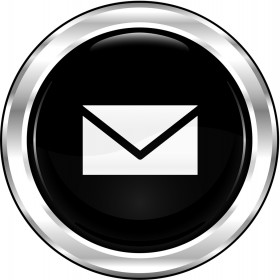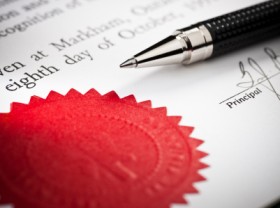Top tips from Mesmo Consultancy (and Associates) on how to save time and improve business and personal performance by ‘Taking Control of your Inbox’ and using proper business email etiquette.
Do you need to see each and every new email as it arrives? Do all emails carry the same value and importance for you and how you perform your job? No. That is judging by the responses from over 200 delegates on various workshops Mesmo Consultancy has run over the past few weeks. Less than 3% of participants confessed that there really would be a problem if they did not see an email within twenty minutes of its arrival in their inbox.
Bearing in mind your inbox is a picture of you and the role you perform, there are obviously some of you who are more at the sharp end than others. However, interestingly when pressed about who are these impatient and badly behaved senders, all bar one or two delegates confessed that it was an internal senior manager and not a customer/client who had such short email response time frames.
more at the sharp end than others. However, interestingly when pressed about who are these impatient and badly behaved senders, all bar one or two delegates confessed that it was an internal senior manager and not a customer/client who had such short email response time frames.
It would seem that by and large customers/clients actually do have a slightly longer fuse than we anticipate. They expect to wait an hour or two for a reply. They acknowledge that if it’s urgent a phone call might be better and that you as the recipient might not be at your inbox the minute they send their email.
So why do so many people let their days and life be dominated by the arrival of a new email – in some cases dropping an urgent task in favour of a new email? Some possible explanations are:
For those concerned that email addiction might be the cause, you can check yourself out using Mesmo Consultancy’s free email addiction benchmarking tool – click here to start.
For others here are our tip five tips to help you focus and stop being driven by email.
Tags: email addiction, email distractions, email response times, Mesmo Consultancy, Out of Office
In February and March a number of good books have been published. Those on my desk include:

What’s on your reading list?
A recurrent question with clients has been how much information to include in your email signature block (from company logos and awards to the full postal address).
Recently I received an email where the logos and awards included in the signature block amounted to nearly 35KB which was more than both the content and the attached Word file. Three emails like this and that’s a third of a MB of unwanted storage space. I diligently deleted all the offending images in order to keep my inbox slim. Overweight email signature blocks are one of my pet peeves!
What constitutes good email etiquette for an email signature block? We are all looking to create a professional image which makes our email stand out in an ever crowded inbox. Including logos in an email means that you can:

• Impress clients with your awards;
• Reinforce your brand logo.
However, the downsides are that such images:
• Add to the size of the email and hence take up more storage space.
• Mean the email takes longer to download (as its bigger than it needs to be and not everyone has access to superfast broadband).
• Are often seen as spam and cause important emails to be trapped and quarantined.
• Not always rendered properly and can look naff (given the range of devices people use to read their email).
The other aspect of the email signature block is how much information to include. My other pet peeve is an email where the contact information is longer than the message itself. One 11 line email had a 23 line block as the sign off (person’s title full contact details etc) and it is on every email entry. How to annoy the recipient very quickly.
Always include as a minimum a contact phone number. After three rounds of email ping-pong, the other person might want to phone you. They too are time poor and if they cannot see a phone number quickly and easily, they will default to email which is often unproductive for everyone (and especially if building a new relationship is involved).
Conversely, not everyone needs all your contact details ie address, fax, mobile etc. So don’t clutter up the email with unnecessary verbiage. Be selective. As default, use the minimum (ie name and phone number) and only insert your full details when asked.
Small is beautiful for email and is the best form of email etiquette. This means the minimum of size and content. A good website, not an email is the place to project your corporate image, company values etc and full postal address.
For more on corporate email etiquette and especially how to close an email see previous blogs and of course ‘Brilliant Email’. If you still have any questions and need help, call us and ask about our Brilliant Email masterclasses.
What is your pet peeve?
Tags: corporate email etiquette, email best practice, email etiquette, Email signature block, Outlook
One of the major side effects of email overload (and email addiction) is that we sit for hours at our desk which then impinges on our well-being. In this month’s guest blog from Simon Lesser of BourneFit, Simon looks at the impact on our well-being and gives us some top tips to how to improve this and our work-life balance.
Working is a necessity, particularly working behind a computer for many of us. This may be a large part of the day often extending upwards of 6-8 hours allowing for the occasional tea and biscuit. Here are some top tips on improving posture daily and hence reducing chance of RSI, neck pain and round back posture.
There are a number of simple thing we can do but initially let’s look at what can happen…….
Shocking, and he’s supposed to be a fitness professional !
We can notice a number of things.
So let’s see what simple improvements can be made……

Much better!
Maintaining your well-being (in-spite of email overload)
About Simon Lesser and BourneFit
Simon Lesser is founder and owner of BourneFit a Bournemouth based fitness and sport therapy business. For more information click visit the BourneFit website. There you will also information of healthy eating and other ways to improve your well-being and maintain a good work-life balance.
Tags: BourneFit, email addiction, email overload, Simon Lesser, well being
In the final part of this series of interview with David Grossman, he reviews what are the barriers and drivers to creating a more effective email communications culture.
Monica: What do you see as the principle issues restricting the use of email within organizations?
David: Limiting email and reducing abuses is a step in the right direction, especially for middle managers.
We conducted research of 1,100 executives, senior leaders, managers, and employees on their perceptions of e-mail.
Our 2012 email perception study, “Enough Already! Stop Bad Email,” shows that when it comes to email overload, it’s the middle managers who feel the most pain:
And yet, they don’t want their ability to use email taken away or even interrupted. 83 percent of middle managers agree that email is an effective and necessary communication tool, and only 15 percent said that limiting email during normal business hours would be very effective. Our research suggests that to melt the iceberg that is the “Frozen Middle,” companies need to do a few things:
All that said, limiting email and stopping abuses isn’t the ultimate solution to improving employee engagement, work-life balance, and productivity. Really, it’s a Band-Aid because the much larger issue is about ineffective communications inside organizations today, which is negatively affecting business results. That means leadership needs to assess and improve the overall communication system for the organization.
Monica: How can we improve this situation – top three tips.
David:
For more information on email overload, its effects on the frozen middle, and additional tips, visit our Email Research and Resource Center.
David Grossman, ABC, APR, Fellow PRSA helps leaders drive productivity and get the results they want through authentic and courageous leadership communication, a sought-after speaker and advisor to Fortune 500 leaders. A two-time author, David is CEO of The Grossman Group, an award-winning Chicago-based strategic leadership development and internal communication consultancy; clients include: DuPont Pioneer, Lockheed Martin, McDonald’s, Motel 6 and Tyco, to name a few.
Tags: Clean Inbox, clean out your inbox week, corporate email etiquette, David Grossman, email communications, email overload, The Grossman Group